If you want a traditional Indian stew, look no further than this sambar recipe. Served alone as a vegetable stew or over rice like a curry, it is always a flavorful and aromatic addition to your menu. Packed with nutritous vegetables and naturally vegan, it's an excellent meal everyone will enjoy.

Sambar Recipe
Sambar is an Indian, specifically South Indian, lentil and vegetable stew that is filled with the goodness of veggies and the amazing aroma and flavor of a special spice mix known as Sambar powder. The sambar powder is a critical element when it comes to sambar as it is this powder that decides the unique flavor of the dish.
Want more stews or soups on your menu? While not Indian, there is a ton of flavor in soups from around the globe. Whether it is the Greek lemon rice soup, Mexican shrimp soup, or a traditional Finnish salmon soup, you have tons of options to add warm goodness to your menu.
What Lentils Should I Use For Sambar?
Traditionally, sambar consists of toor dal or pigeon pea lentils. But there’s the liberty to use any other type of lentil or a mix of lentils, as long as the lentils are cooked properly.
If in a bind, you can even use canned lentils that have been rinsed and drained. While freshly cooked is best, a canned option is not unheard of for busy kitchens. I do, however, like to cook them from scratch to season them more while cooking.
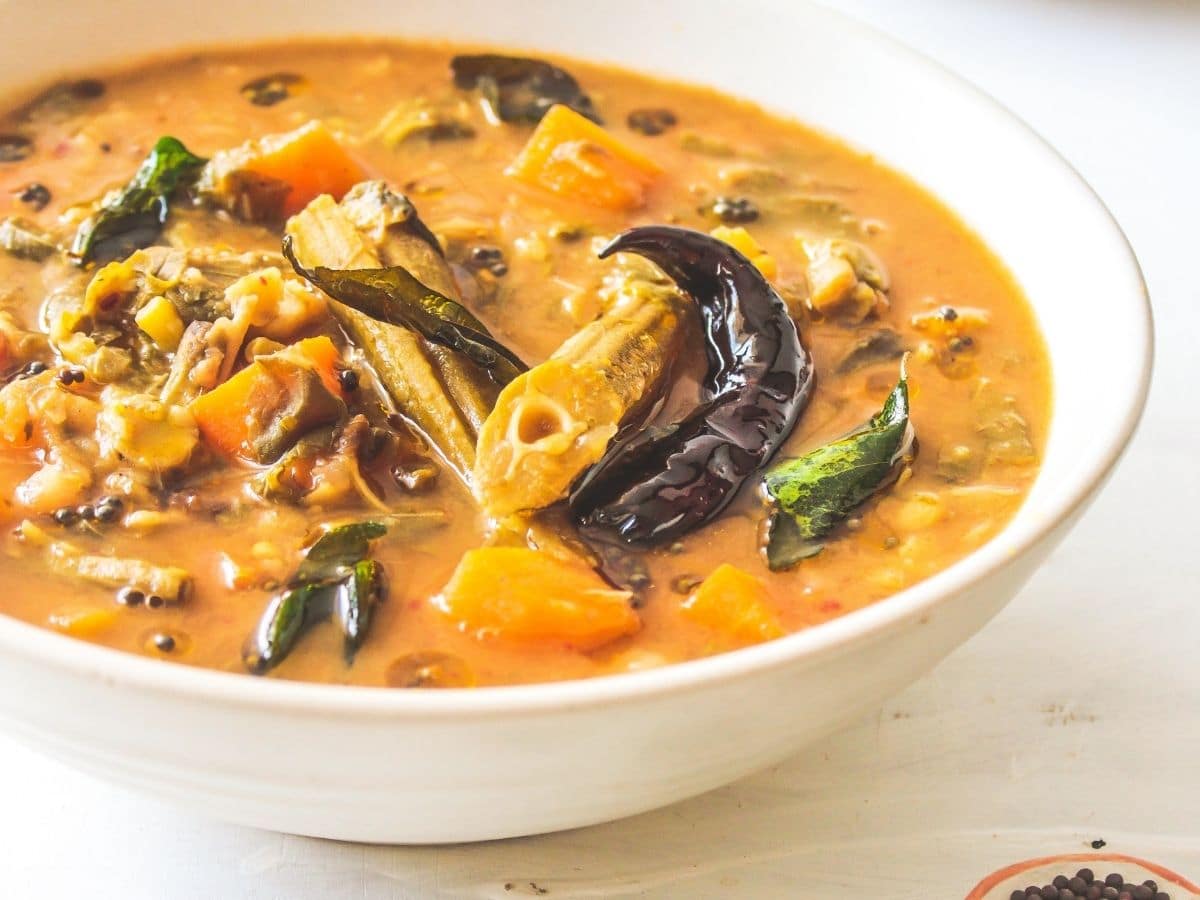
What are Amaranthus Leaves?
This leafy green top of the aramanth plant is a native to Africa, Asia, and the Caribbean. It may be also called pigweed and has been recently called the "new kale". While it may not be in your market yet, it is widely available in Asian or Indian markets.
If you do not have aramanthus leaves available you can easily substitute them with mature spinach, kale, or collards. It will have a similar rich flavor and they are easily found in every grocery store or market.
What is a Drumstick Vegetable?
The drumstick is not a chicken leg as some would think, but in this recipe is a vegetable. It is a pod from the Moringa tree and is cooked down in stews frequently in Indian and Asian cuisine.
Since sambar is a vegetable stew, you can readily use any vegetable of your choice. I, personally, prepare sambar as part of the “clean-the-fridge” marathon that takes place once a month. That is the best part about this dish - the versatility of the ingredients. The most common vegetables used in sambar are carrots, drumsticks, beans, onions, tomatoes, cauliflower, okra, coccasia, green leafy veggies, peas, etc.
Feel free to swap out the vegetables for something different you have on hand. You can even add in potatoes or yams if you wish.

What is Sambar Powder?
Normally in Indian households, the sambar powder is prepared in-house. Some families have age-old recipes for the spice mix. This entails that the sambar in every household has its own flair. There are numerous brands that have also come up with ready-made sambar powders. If you are staying outside India, it would be wise to get your hands on one of the ready-made powders instead of going through the hassle of preparing your own spice mix.
If you want to make your own sambar, it will usually consist of the following spices in some variety.
- Bengal gram
- Black gram
- Toor dal
- Red chili powder
- Coriander seeds
- Methi seeds
- Curry leaves
- Cumin
- Peppercorn
- Turmeric
- Asafoetida
The combination of these spices and the lentils creates a rustic flavor that is a wonderful addition to this stew and truly makes it sambar. You would roast then process these to create your own blend.
You can buy sambar powder at any Asian or Indian market, but it is also widely found in grocery stores where there is a larger Indian community. It can also be ordered on Amazon if needed.
How Do You Serve Sambar?
While sambar is traditionally enjoyed with rice, idli, or dosa, you can also serve it alone or as a hot vegetable stew. It is a great addition to your meal plan that is versatile enough to be served alone or with a traditional rice base or side.
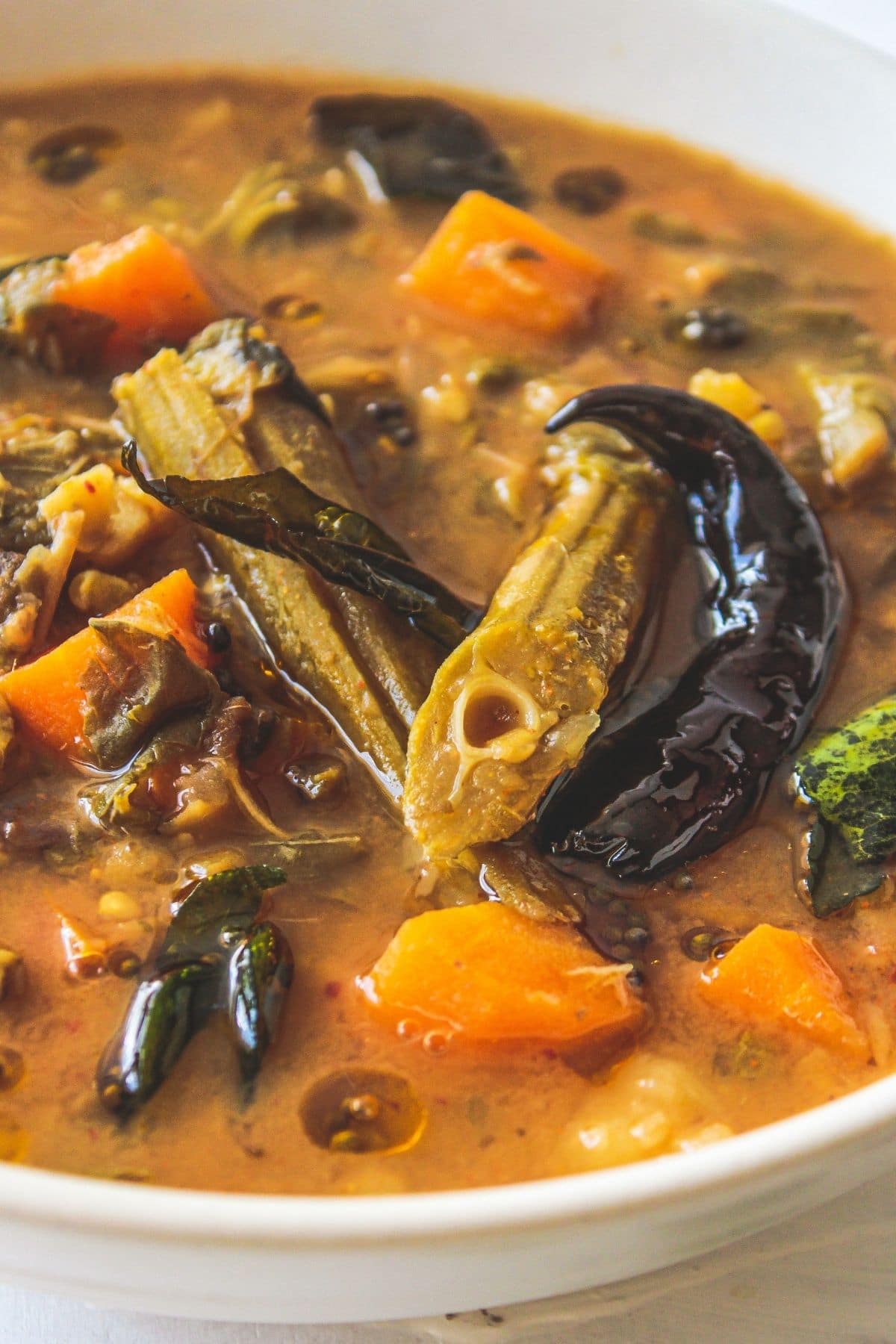
Ingredients for Sambar
- Toor Dal or Pigeon Pea Lentil
- Amaranthus leaves
- Carrots
- Green beans or okra
- Onions
- Tomatoes
- Drumstick
- Green chili
- Tamarind
- Turmeric powder
- Red chili powder
- Sambar powder
- Salt
- Water
Ingredients for Tempering
- Oil
- Mustard seeds
- Curry leaves
- Dry red chili
Kitchen Tools Needed
How to Make Sambar with Traditional Pressure Cooker
If using a traditional stove top pressure cooker, you will wash and soak the lentils in water for at least 4 hours up to overnight.
In the pressure cooker, add the soaked and drained lentils, amaranthus leaves, carrots, green beans, onions, tomatoes, drumstick, green chili, tamarind, turmeric, red chili powder, sambar powder, salt, and water. Stir to combine.
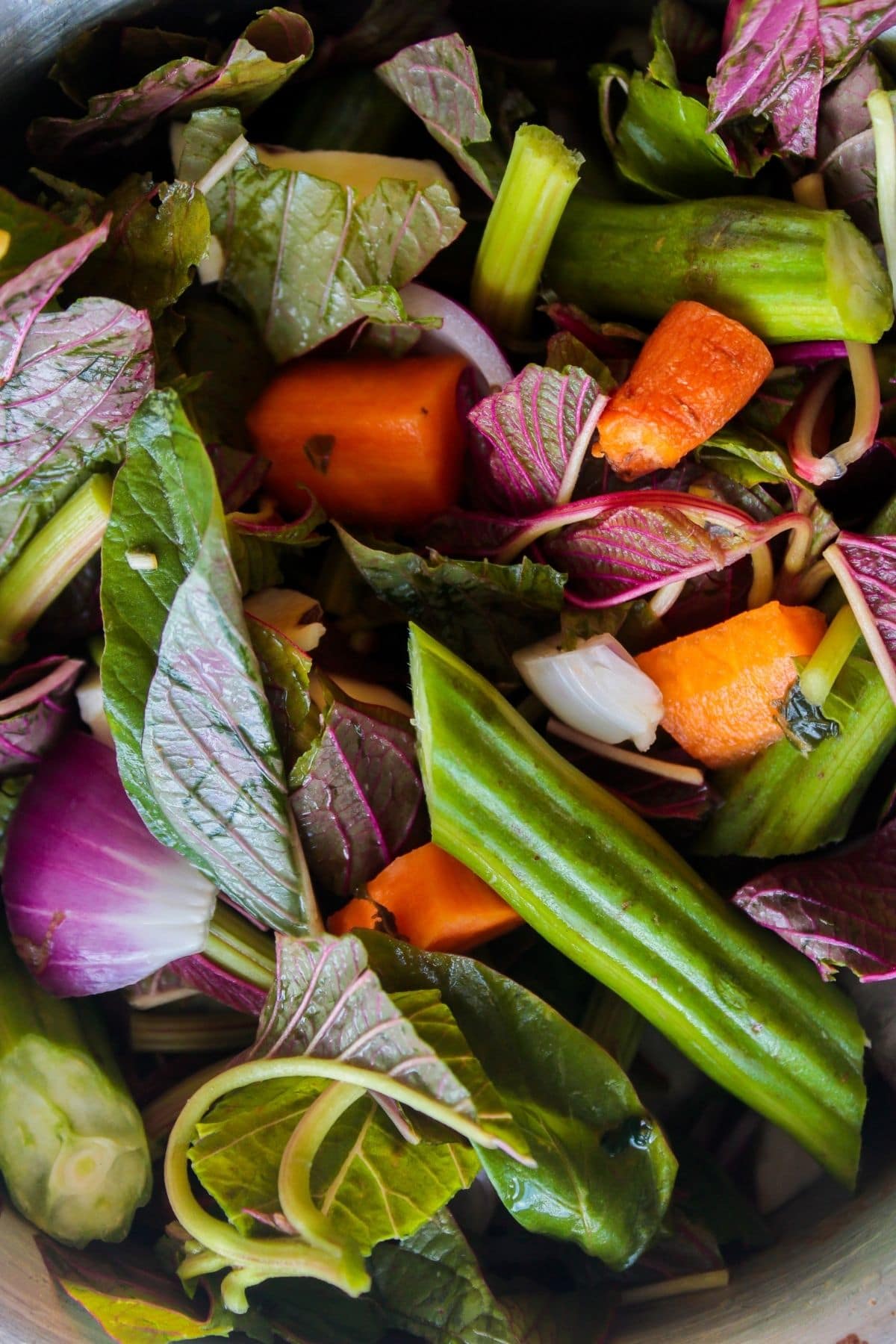
Close the lid of the pressure cooker and let it cook over medium heat for 6 to 7 minutes or for 3 whistles. Open and check to see that the lentils are cooked through. If not, continue cooking an additional 2 to 3 minutes.
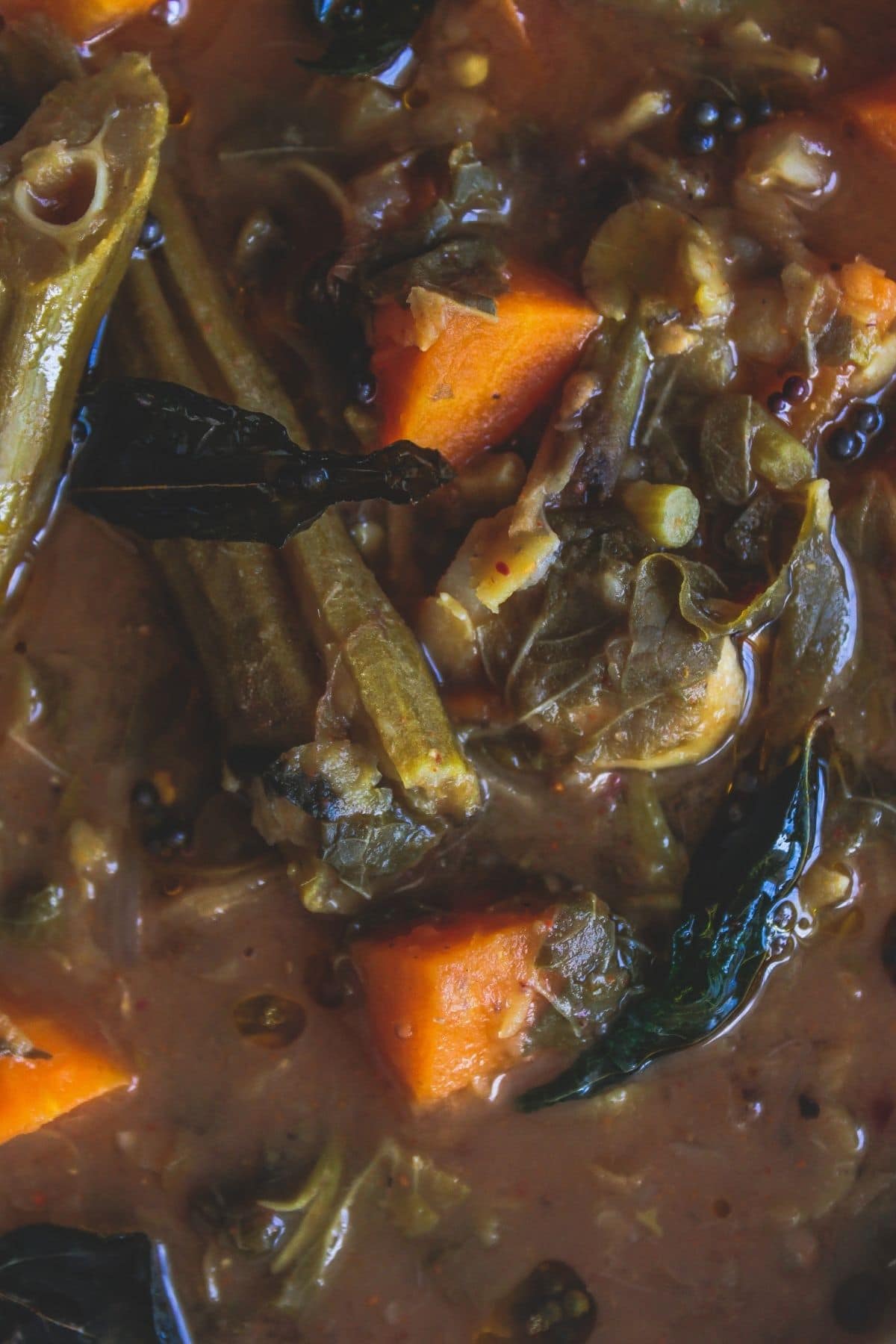
Pour the hot mixture over the sambar and stir to combine.

Serve with rice, dosa, idli, or vada.
How to Make Sambar in an Instant Pot
Turn the Instant Pot to Saute and add the oil, mustard seeds, curry leaves, and dried chile. Saute for 2 to 3 minutes until aromatic and the seeds begin to pop.
Add in the water and stir to make sure there is no burnt on food on the bottom.
Add the remaining ingredients and stir to combine.
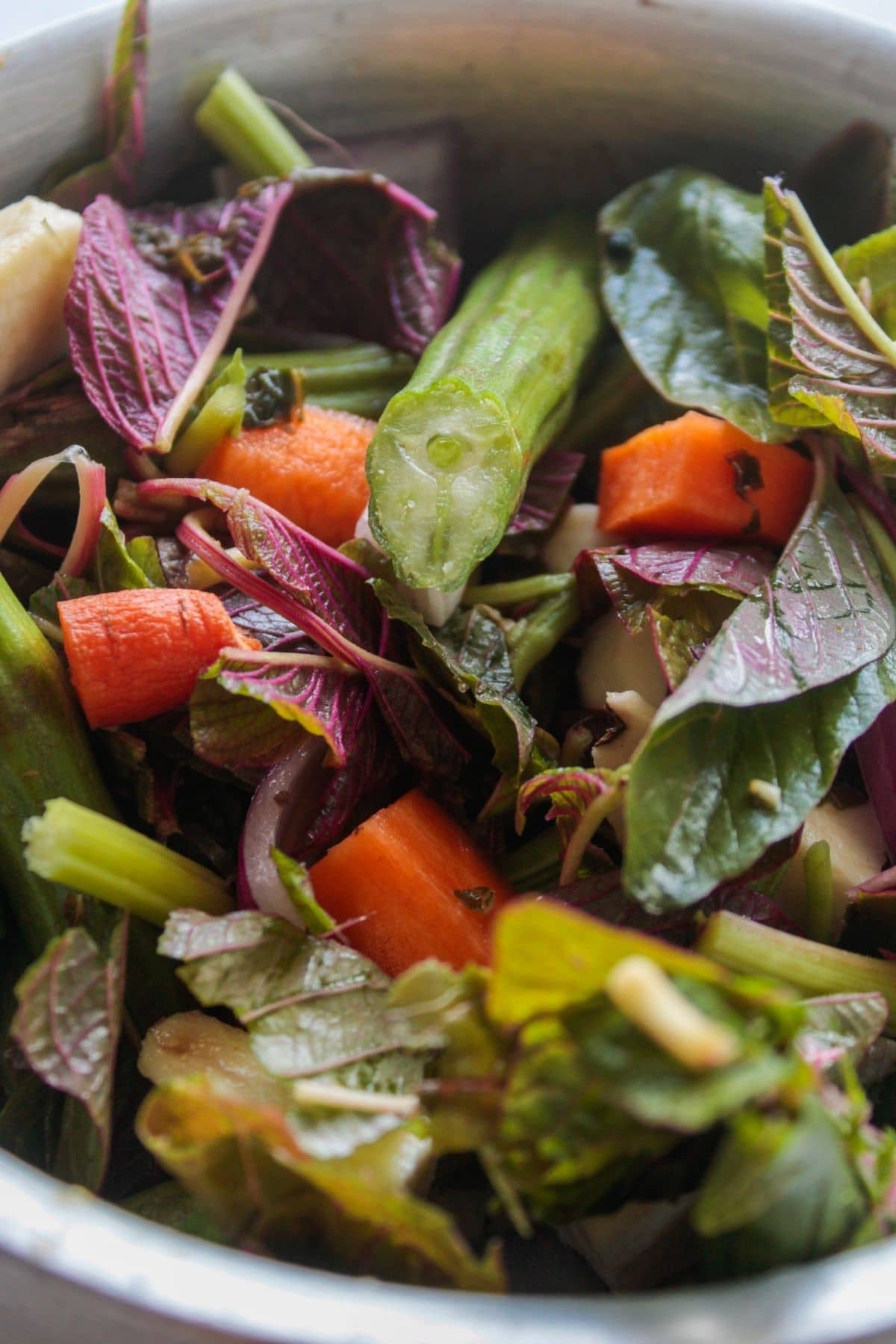
Set the lid to seal and turn to manual pressure. Cook on high pressure for 6 minutes.
Once the cooking process has ended, allow the steam to naturally release for 5 minutes then release the remaining pressure manually.
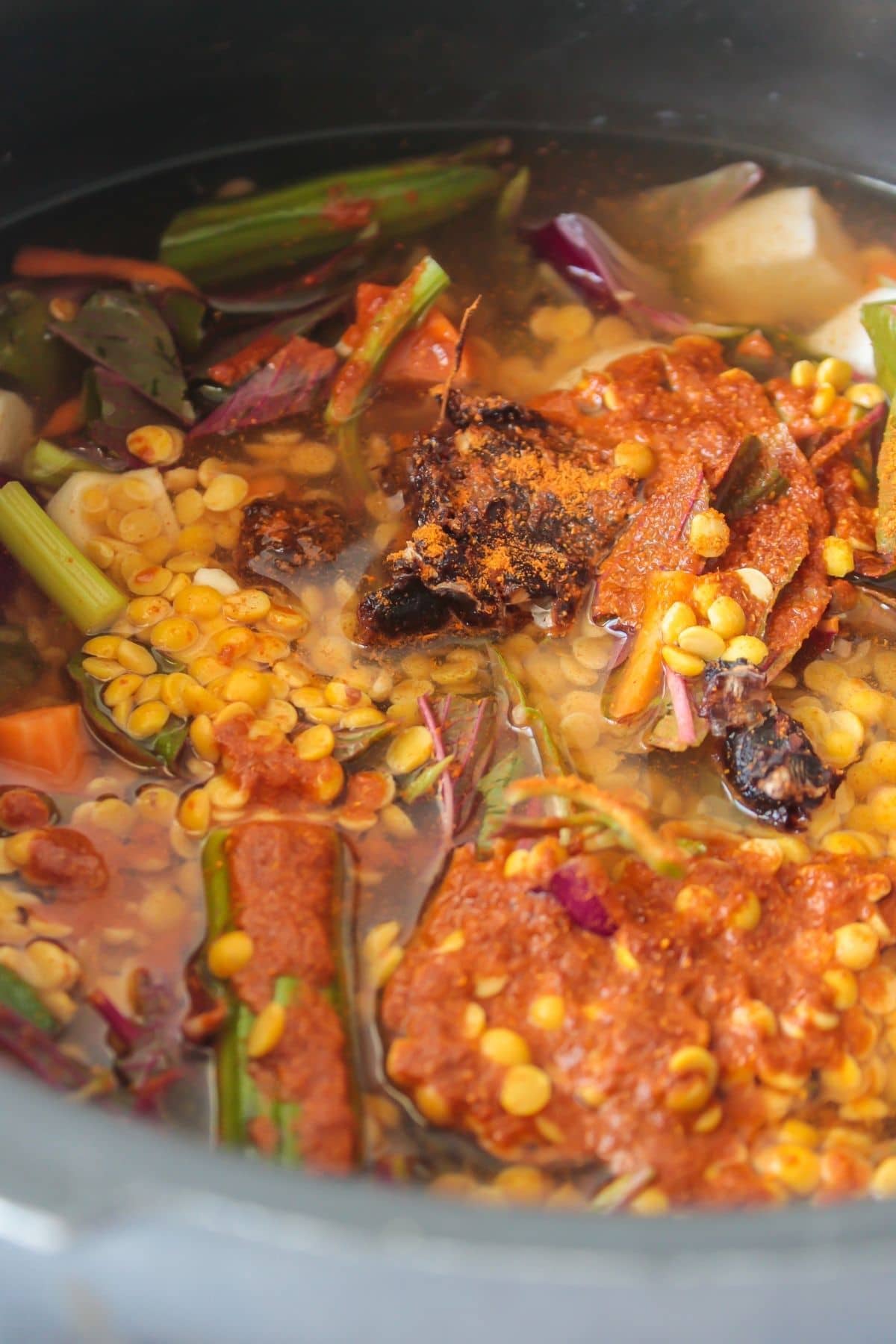
Stir to combine and serve hot with rice, dosa, idli, or vada.
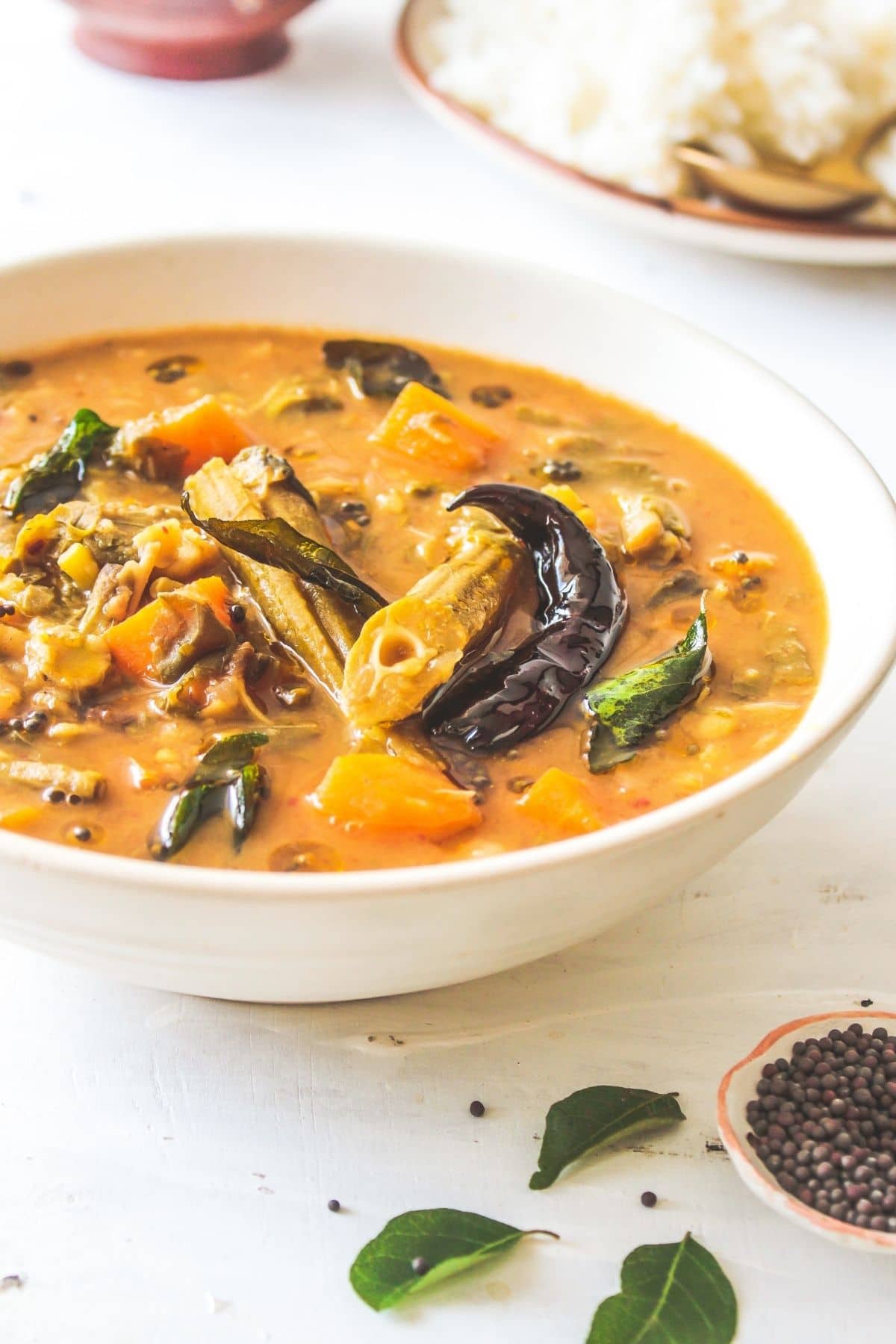
More Indian Recipes
If you want to expand your menu with more Indian dishes, below are some of our favorites. You will find classic meals, sides, and even a dessert here that is sure to bring incredible flavor to your menu.
- Chicken Kofta Korma (Indian Meatballs in Creamy Sauce)
- Indian Carrot Dessert - Gajar Ka Hawla
- Chicken Biryani
- Homemade Naan Bread
- Baked Kurkuri Bhindi Spicy Crispy Okra Recipe

Indian Sambar Lentil Vegetable Stew
Equipment
- Traditional or electric pressure cooker
- Measuring spoons
- Knife
- Cutting board
- Small skillet
Ingredients
For Sambar
- ½ cup pigeon pea lentils cooked
- 3 cups Amaranthus leaves alternate: kale, spinach, or collards
- ½ cup carrots chopped
- ½ cup green beans or okra chopped
- ¼ cup red onion chopped
- ½ cup tomatoes chopped
- 10 -12 pieces drumstick cut into 2" pieces
- 1 tbsp green chile chopped
- 2 tbsp tamarind
- 1 tsp Turmeric powder
- 1 tbsp red chili powder
- 3-4 tbsp Sambar powder
- 1 tbsp salt more or less to taste
- 4 cups water
For Tempering
- 2 tbsp Olive oil
- 1 tbsp Mustard seeds
- 1 cup curry leaves
- 1-2 dried red chile
Instructions
How to Make Smbar with Traditional Pressure Cooker
- Wash and soak the lentils in water for at least 4 hours up to overnight.
- In the pressure cooker, add the soaked and drained lentils, amaranthus leaves, carrots, green beans, onions, tomatoes, drumstick, green chili, tamarind, turmeric, red chili powder, sambar powder, salt, and water. Stir to combine.
- Close the lid of the pressure cooker and let it cook over medium heat for 6 to 7 minutes or for 3 whistles. Open and check to see that the lentils are cooked through. If not, continue cooking an additional 2 to 3 minutes.
- Pour the hot mixture over the sambar and stir to combine.
- Serve with rice, dosa, idli, or vada.
How to Make Sambar in an Instant Pot
- Wash and soak the lentils in water for at least 4 hours up to overnight.
- Turn the Instant Pot to Saute and add the oil, mustard seeds, curry leaves, and dried chile. Saute for 2 to 3 minutes until aromatic and the seeds begin to pop.
- Add in the water and stir to make sure there is no burnt on food on the bottom.
- Add the remaining ingredients and stir to combine.
- Set the lid to seal and turn to manual pressure. Cook on high pressure for 6 minutes.
- Once the cooking process has ended, allow the steam to naturally release for 5 minutes then release the remaining pressure manually.
- Stir to combine and serve hot with rice, dosa, idli, or vada.




Join the Discussion